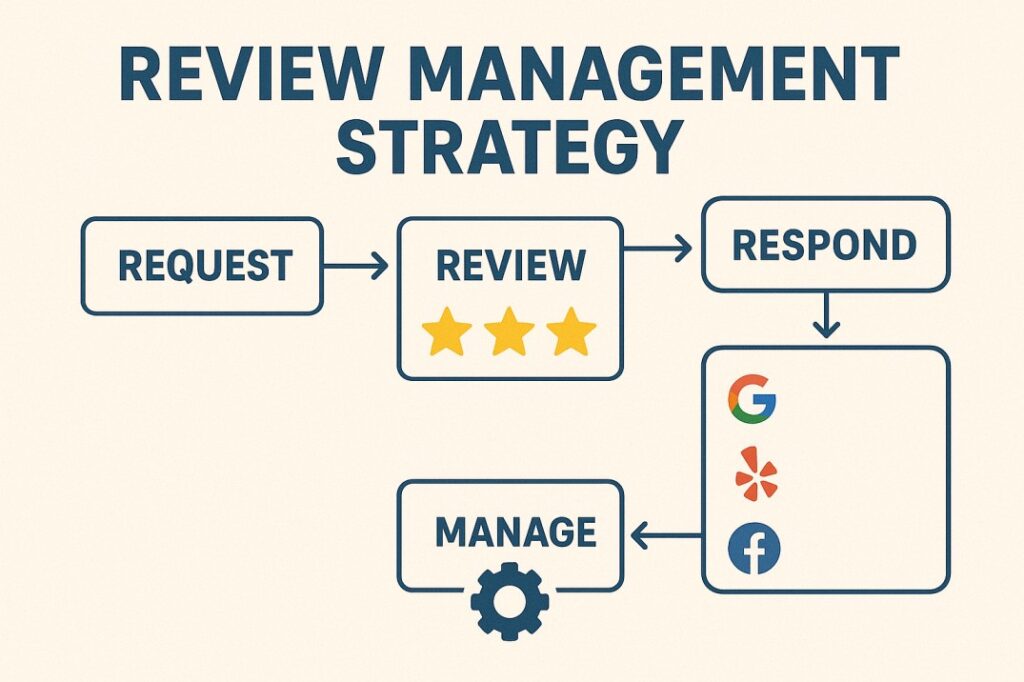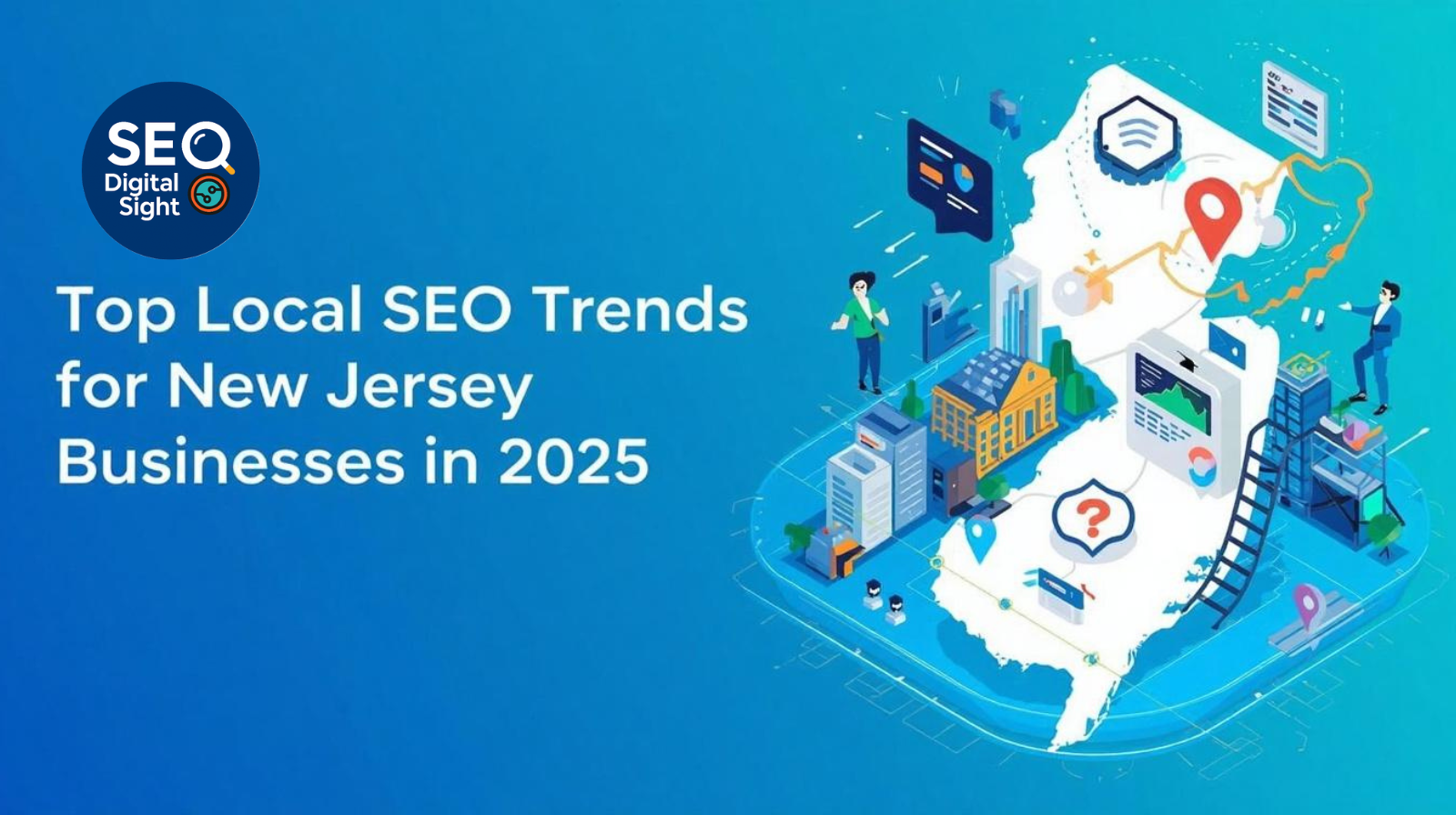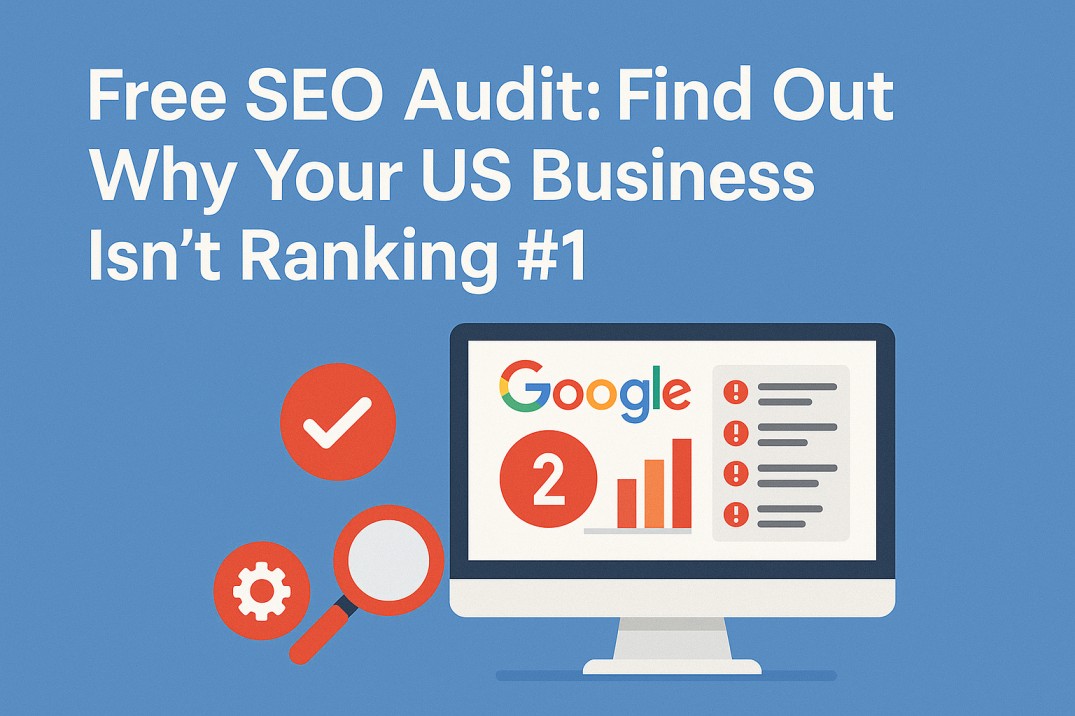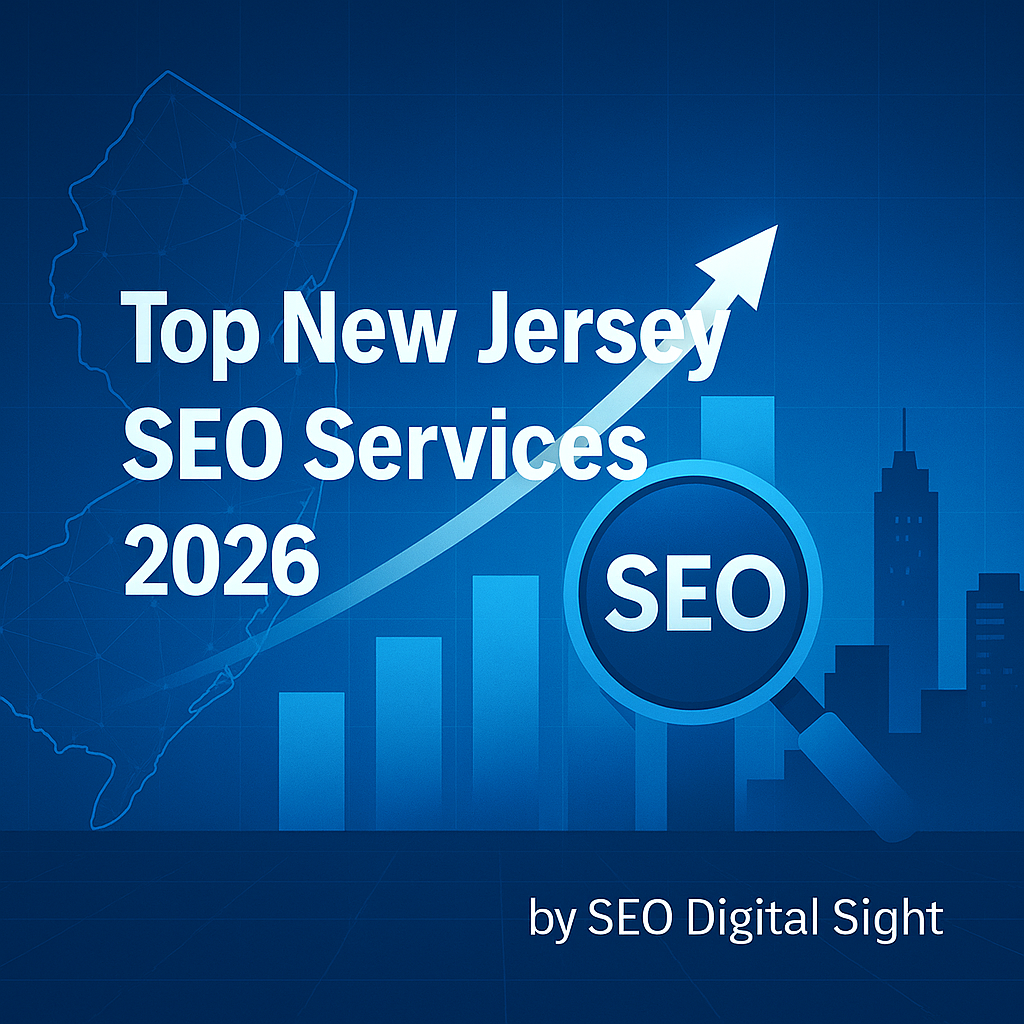In today’s digital landscape, 46% of all Google searches have local intent. And now the AI is taking the search graph bar even higher. If your business isn’t optimized for local search, you’re missing out on customers who are actively looking for your products or services right now in your area. Local SEO has become the most powerful tool for businesses serving specific geographic markets across the United States, from small neighbourhood shops to multi-location enterprises.
Whether you’re running a restaurant in New Jersey, a law firm in New York City, a medical practice in Boston, or a home services company in Houston, implementing and correctly mapping local SEO can transform your online visibility and drive consistent, qualified leads to your business. This comprehensive guide will walk you through everything you need to know about local SEO, from foundational strategies to advanced tactics that separate market leaders from competitors.
Understanding Local SEO: What Makes It Different
Local SEO is the practice of optimizing your online presence to attract more business from relevant local searches. Unlike traditional SEO that focuses on ranking nationally or globally, local SEO targets customers in specific geographic areas. When someone searches for “plumber near me,” “best pizza in Brooklyn,” or “divorce attorney Houston,” local SEO determines which businesses appear in those crucial top results. As the AI Overviews have stepped up in mid 2025 Google Update, now the searches like Best Pizza in New York require to be in the AI overviews to sustain as well as get the trust, believe and lead from customers.
The stakes are incredibly high. According to recent data, 76% of people who search for something nearby on their smartphone visit a related business within 24 hours, and 28% of those searches result in a purchase. Local SEO isn’t just about visibility; it’s about capturing customers at the exact moment they’re ready to buy. Local SEO makes business available as well as it creates branding for the business and its services in the local area. Local SEO provides the grip near the service or office location to the business. Google My business (GMB) allows you to put images and descriptions helping people know about the core business functions.
What makes local SEO unique is its focus on three critical elements: proximity, prominence, and relevance. Google’s local algorithm evaluates how close your business is to the searcher, how well known and trusted your business is, and how well your business matches what the searcher is looking for. Optimizing for these factors requires a specialized approach that combines technical expertise with local market knowledge.
For businesses operating in competitive markets like New Jersey, New York City, Boston, or Houston, professional local SEO services become essential for standing out in crowded marketplaces where dozens of competitors are fighting for the same customers.
Tutorial: Building Your Local SEO Foundation
Step 1: Claim and Optimize Your Google Business Profile
Your Google Business Profile (formerly Google My Business) is the cornerstone of local SEO success. This free tool from Google allows you to manage how your business appears in Google Search and Maps. A fully optimized profile can dramatically increase your visibility in local search results.
Start by claiming your business listing if you haven’t already. Visit the Google Business Profile website and search for your business. If it exists, claim it. If not, create a new listing. The verification process typically involves receiving a postcard at your business address with a verification code, though some businesses may qualify for instant verification.
Once verified, complete every section of your profile meticulously. Add your exact business name as it appears on your storefront and legal documents. Input your complete address, ensuring it matches exactly how it appears on your website and other online directories. This consistency, known as NAP (Name, Address, Phone) consistency, is crucial for local SEO success.
Select your primary business category carefully, as this significantly impacts when and where your business appears in search results. If you’re a family law attorney, choose “Family Law Attorney” rather than the generic “Lawyer.” You can add secondary categories, but your primary category should precisely match your main service offering.

Write a compelling business description that naturally incorporates your target keywords and service areas. Instead of keyword stuffing, focus on clearly explaining what makes your business unique and why local customers should choose you. Mention specific neighborhoods, cities, or regions you serve.
Add high quality photos of your business, products, team, and location. Businesses with photos receive 42% more requests for directions and 35% more click throughs to their websites. Include exterior shots showing your storefront, interior photos showcasing your space, product images, and team photos that humanize your business.
Set your business hours accurately and update them for holidays or special events. Nothing frustrates potential customers more than arriving at a business during posted hours only to find it closed. Use the special hours feature to communicate holiday closures or extended hours during busy seasons.
Step 2: Build and Maintain Citation Consistency
Citations are online mentions of your business name, address, and phone number on other websites. These mentions help Google verify that your business is legitimate and establish trust in your location information. The more consistent and widespread your citations, the stronger your local SEO foundation.
Start with the major data aggregators and directories that feed information to hundreds of other sites. Submit your business to Acxiom, Localeze, Factual, and Infogroup. These platforms distribute your information across the web, creating a foundation of citations.
Next, focus on major general directories that consumers actually use. Ensure your business is listed on Yelp, Yellow Pages, Bing Places, Apple Maps, Facebook, and LinkedIn. Each platform requires complete, consistent information matching your Google Business Profile exactly.
Industry specific directories provide particularly valuable citations. If you’re a restaurant, list your business on OpenTable, Yelp, TripAdvisor, and Zomato. Lawyers should appear on Avvo, Justia, and FindLaw. Healthcare providers need listings on Healthgrades, Vitals, and WebMD. These niche directories carry significant weight in local search algorithms for their respective industries.
Local directories and chamber of commerce websites offer geographically relevant citations. Join your local chamber of commerce and ensure your business appears in their online directory. Look for city specific business directories, neighbourhood associations, and local news websites that maintain business listings.

Audit your existing citations regularly to identify and fix inconsistencies. Use tools like Moz Local, BrightLocal, or Whitespark to scan the web for mentions of your business. When you find incorrect information, claim the listing and update it. Inconsistent citations confuse Google and can harm your local rankings.
Step 3: Optimize Your Website for Local Search
Your website serves as the foundation for all local SEO efforts. Without proper on page optimization, even the best Google Business Profile won’t deliver maximum results. Start by ensuring your website clearly displays your business name, address, and phone number in a consistent format, preferably in the footer of every page.
Create dedicated location pages if you serve multiple areas. Each page should target a specific city or neighborhood with unique, valuable content about serving that area. Avoid duplicating content across location pages; instead, discuss local landmarks, neighborhood characteristics, community involvement, and area specific services.
Implement local business schema markup on your website. This structured data helps search engines understand your business details, including your address, phone number, business hours, accepted payments, and more. Use Google’s Structured Data Markup Helper to generate the correct code.
Optimize your title tags and meta descriptions with local keywords. Instead of generic titles like “Best Plumber | ABC Plumbing,” use location specific titles like “Emergency Plumber in Brooklyn | 24/7 Service | ABC Plumbing.” Include your city or neighborhood in title tags naturally.
Embed a Google Map showing your business location on your contact page. This helps visitors find you easily and reinforces your location signals to search engines. Use the embed code from Google Maps rather than third party map services.
Create locally focused content that demonstrates your expertise and community involvement. Write blog posts about local events, neighborhood guides, area specific tips, and community news. This content helps you rank for local informational queries and positions you as a trusted local authority.
Step 4: Generate and Manage Customer Reviews
Online reviews have become one of the most powerful ranking factors in local SEO. Businesses with higher ratings and more reviews consistently outrank competitors in local search results. Beyond rankings, reviews directly influence consumer decisions, with 93% of consumers saying online reviews impact their purchasing choices.
Develop a systematic approach to requesting reviews from satisfied customers. The best time to ask is immediately after delivering excellent service when the positive experience is fresh. Create a simple process that makes leaving a review as easy as possible.
Send follow up emails after purchases or service completion that include direct links to your Google Business Profile review page. Personalize these requests by mentioning the specific service or product they purchased. Keep the message brief and emphasize how much their feedback helps your business serve the community better.
Train your team to ask for reviews in person. A simple request like “If you were happy with our service today, would you mind sharing your experience online?” can be remarkably effective. Provide customers with business cards that include a QR code linking directly to your review page.
Respond to every review, positive and negative, promptly and professionally. Thank customers for positive reviews and acknowledge their specific comments. For negative reviews, apologize for the poor experience, address their concerns directly, and offer to make things right offline. Never argue with reviewers or make excuses.

Monitor reviews across all platforms, not just Google. While Google reviews carry the most weight for local SEO, reviews on Facebook, Yelp, industry specific sites, and other platforms contribute to your overall online reputation. Use review management tools to track mentions across the web.
Step 5: Build Local Links and Authority
Link building for local SEO focuses on earning backlinks from other reputable websites in your geographic area. These local links signal to Google that your business is an established, trusted part of the community.
Start with easy local link opportunities. Sponsor local events, sports teams, or charitable organizations and ensure your sponsorship includes a link from their website. Join your local chamber of commerce and business associations that provide member directory listings with links.
Pursue local media coverage by developing newsworthy stories about your business. Launch a new service, host a community event, achieve a significant milestone, or contribute expert commentary on industry news. Contact local newspapers, TV stations, radio shows, and online news sites with your pitch.
Partner with complementary local businesses for mutual linking opportunities. A wedding photographer might exchange links with local florists, venues, and caterers. A personal injury attorney might link to trusted local medical providers who refer clients back.
Create valuable local resources that naturally attract links. Develop comprehensive neighborhood guides, local event calendars, community resource directories, or industry specific local content that other websites want to reference.
Guest post on local blogs and online publications. Share your expertise through articles that provide genuine value to readers while including a natural link back to your website. Focus on quality over quantity, targeting reputable local sites with engaged audiences.
Frequently Asked Questions About Local SEO
How long does local SEO take to show results?
Local SEO typically shows initial improvements within three to four months, with significant results appearing around the six month mark. However, timeline varies based on your starting point, competition level, and how aggressively you implement strategies. Businesses in smaller markets with less competition may see results faster, while those in major cities like New York competing against established businesses need longer timelines. The key is consistency; local SEO requires ongoing effort rather than one time optimization.
Can I do local SEO myself or should I hire professionals?
Small businesses can handle basic local SEO tasks like claiming their Google Business Profile, building citations, and requesting reviews. However, technical optimization, advanced link building, and competitive strategy often require professional expertise. Many businesses find the best approach is handling routine maintenance themselves while partnering with professional SEO services for strategic planning and technical implementation.
How important are online reviews for local rankings?
Reviews are critically important, functioning as both a direct ranking factor and an indirect influence on click through rates. Google’s algorithm considers review quantity, quality, velocity (how frequently you receive new reviews), and diversity (reviews across multiple platforms). Beyond rankings, reviews directly impact conversion rates. A business with 4.5 stars and 200 reviews will almost always outperform a competitor with 5 stars but only 10 reviews.
What is the Google Local Pack and how do I get in it?
The Google Local Pack (also called the Map Pack or 3 Pack) refers to the three business listings that appear in a map box at the top of local search results. Getting into this coveted space requires strong Google Business Profile optimization, consistent citations, positive reviews, relevant website content, and local backlinks. Competition for these three spots is intense, but appearing there can dramatically increase your visibility and customer inquiries.
Do I need a physical address for local SEO?
Not necessarily. Service area businesses (those that travel to customers rather than having customers visit a location) can still benefit from local SEO by setting up a Google Business Profile and selecting their service areas. However, having a physical address in your target market provides the strongest local SEO signals. Some businesses use virtual offices or coworking spaces, though Google’s policies around these are strict and evolving.
How do I rank in multiple cities without having physical locations?
Service area businesses can rank in multiple cities by creating dedicated, valuable content for each location, building citations in each area, earning reviews that mention specific cities, and developing backlinks from websites in those locations. However, ranking in multiple cities without physical presence is challenging and requires substantial effort. The further you get from your actual location, the harder it becomes to rank.
What should I do about negative reviews?
Respond to negative reviews quickly, professionally, and empathetically. Acknowledge the customer’s experience, apologize for their dissatisfaction, and offer to resolve the issue offline. Never argue, make excuses, or ignore negative reviews. A thoughtful response to criticism often impresses potential customers more than a stream of perfect reviews. Focus on earning many positive reviews to dilute the impact of occasional negative ones.
Client Success Stories: Real Results from Local SEO
New Jersey HVAC Company Triples Lead Volume
A family owned HVAC company in northern New Jersey was struggling to compete with larger competitors despite 20 years of excellent service. Their website rarely appeared in search results, and they relied heavily on expensive pay per click advertising and word of mouth referrals.
We implemented a comprehensive New Jersey SEO strategy focused on local visibility. We optimized their Google Business Profile with professional photos, detailed service descriptions, and strategic category selections. We built consistent citations across 75 local and industry directories. We created location specific landing pages for each of the 15 towns they served, complete with local content and customer testimonials from those areas.
Within six months, their Google Business Profile appeared in the Local Pack for their primary service keywords in their target areas. Organic website traffic increased 285%, and phone call volume from organic search tripled. Most importantly, they reduced their pay per click spending by 60% while maintaining the same overall lead volume, significantly improving their marketing ROI.
Boston Multi-Location Restaurant Dominates Local Search
A growing restaurant group with five locations across the Boston area was losing customers to competitors with stronger online presence. Each location had inconsistent information online, limited reviews, and poor search visibility. Potential customers often couldn’t find accurate hours, menus, or location information.
Our Boston SEO team developed a multi location optimization strategy. We created and optimized separate Google Business Profiles for each location, ensuring unique content and location specific details. We implemented a review generation system that increased their review count by 400% within four months, with an average rating improving from 3.8 to 4.6 stars.
We built location pages on their website showcasing each restaurant’s unique atmosphere, local menu items, and neighborhood information. Local link building focused on food bloggers, neighborhood associations, and Boston area publications.
Results were dramatic. All five locations achieved first page rankings for their primary keywords. Three locations regularly appeared in the Local Pack. Reservation requests increased 165% overall, with two locations seeing over 200% increases. The restaurant group has since opened two additional locations, implementing our local SEO strategies from day one.
Houston Legal Firm Establishes Market Authority
A mid sized personal injury law firm in Houston was invisible in local search despite handling hundreds of cases annually. They ranked on page four or five for competitive terms, essentially invisible to potential clients. Most new business came from paid advertising and referrals.
We developed a comprehensive content and local SEO strategy that positioned them as Houston’s premier personal injury resource. We created in depth guides about Texas personal injury law, neighbourhood accident data, local hospital information, and legal rights specific to Houston residents.
We optimized their Google Business Profile and built citations emphasizing their Houston focus. We implemented a client success program that generated authentic reviews highlighting their local expertise. Strategic link building targeted Houston legal directories, local news sites, and community organizations.
Within eight months, they ranked in the top three positions for high value keywords like “Houston personal injury lawyer” and “car accident attorney Houston.” Their Google Business Profile appeared consistently in the Local Pack. Organic leads increased 310%, and the quality of those leads improved significantly as the content attracted clients with strong cases rather than casual information seekers.
The firm’s managing partner noted that the biggest change wasn’t just the quantity of new cases but the caliber of clients who now viewed them as the authoritative choice for personal injury representation in Houston.
Advanced Local SEO Strategies for Competitive Markets
Once you’ve mastered the fundamentals, these advanced tactics can help you dominate even the most competitive local markets.
Hyper Local Content Targeting
Create content that targets specific neighborhoods within your city rather than just the city itself. Instead of writing about “best coffee in Boston,” create detailed guides about “best coffee shops in Back Bay” or “where to find the best espresso in Cambridge.” This hyper local approach helps you capture long tail searches and positions you as a true neighborhood expert.
Voice Search Optimization
Optimize for conversational queries that people use with voice assistants. Voice searches tend to be longer and more question based. Create FAQ content that directly answers common questions in natural language. Target phrases like “where can I find” and “who is the best” rather than just keyword phrases.
Video Content for Local Engagement
Create video content showcasing your business, team, location, and community involvement. Virtual tours, behind the scenes footage, customer testimonials, and educational content perform exceptionally well in local search. Host videos on YouTube and embed them on your website, optimizing titles and descriptions with local keywords.
Seasonal and Event Based Optimization
Capitalize on seasonal trends and local events by creating timely content and promotions. If your city hosts a major festival, create content around it and optimize for event related searches. Adjust your Google Business Profile posts, website content, and service offerings to align with seasonal demand in your area.
Taking Action: Your Local SEO Next Steps
Local SEO success requires consistent effort and strategic implementation. Start with the fundamentals: claim and optimize your Google Business Profile, build consistent citations, encourage customer reviews, and optimize your website for local search. These foundational elements create the platform for long term success.
As you progress, invest in advanced strategies like hyper local content, strategic link building, and multi location optimization if applicable. Monitor your results regularly using Google Business Profile insights, Google Analytics, and ranking tracking tools. Adjust your strategy based on what’s working and what isn’t.
Remember that local SEO is an ongoing process, not a one time project. Search algorithms evolve, competitors emerge, and customer behavior changes. Staying ahead requires continuous optimization, fresh content, and adaptation to new trends and technologies.
For businesses serious about dominating their local markets, partnering with experienced professionals can accelerate results and avoid costly mistakes. Whether you’re looking to improve visibility in New Jersey, New York, Boston, Houston, or anywhere across the United States, expert local SEO services can deliver the results your business deserves.
The opportunity is clear: customers in your area are searching for your services right now. With proper local SEO, your business can be the one they find, choose, and recommend to others. Start implementing these strategies today, and watch as your local visibility, customer inquiries, and revenue grow consistently month after month.
Your competitors are investing in local SEO. The question isn’t whether you should optimize for local search, but whether you’re willing to let competitors capture the customers who should be yours. Take action now, and position your business as the obvious choice in your local market.
📈 Let’s Grow Together:
Fill out the form below to book a free call with our SEO specialists. Discuss your goals, get a personalized SEO audit, and see how we can transform your online presence into consistent business growth.













